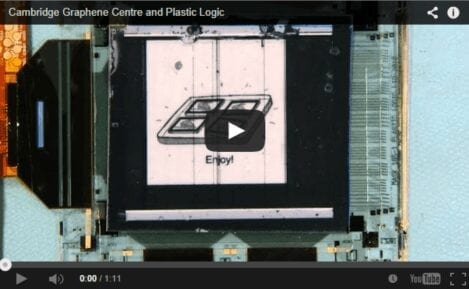
Image Courtesy of Nature Communications
More efficient fuel cells might gain wider use in vehicles or as quiet, pollution-free, neighborhood electricity generating stations.
Researchers have been trying to increase the efficiency of solid oxide fuel cells by lowering the temperatures at which they run. More efficient fuel cells might gain wider use in vehicles or as quiet, pollution-free, neighborhood electricity generating stations. A serendipitous finding has resulted in a semiconducting material that could enable fuel cells to operate at temperatures two-thirds lower than current technology, scientists reported August 18 in Nature Communications.
In an attempt to create a metal oxide with the properties of metal, researchers at the Department of Energy’s Pacific Northwest National Laboratory created a new form of the metal oxide. This particular strontium-chromium oxide performs as a semiconductor, or a material whose ability to conduct electricity can be turned on and off. It also allows oxygen to diffuse easily, a requirement for a solid oxide fuel cell. Best yet, it allows diffusion at a temperature that can lead to much more efficient fuel cells.
Nothing is Something
Energy researchers need improved materials to make fuel cells more widely used. Solid oxide fuel cells require oxides capable of absorbing and transmitting negatively charged oxygen atoms at low temperature. Current materials require temperatures around 800 degrees Celsius (for reference, car engines run at about 200 degrees Celsius and steel melts around 1500).
The Latest on: Fuel Cells
[google_news title=”” keyword=”Fuel Cells” num_posts=”10″ blurb_length=”0″ show_thumb=”left”]
via Google News
The Latest on: Fuel Cells
- California Welcomes First Big-Rig Hydrogen Fuel Station in U.S.on April 26, 2024 at 9:08 am
The country’s first commercial hydrogen fuel station for big-rig trucks is up and running at the Port of Oakland, a step toward what hydrogen proponents see as a clean new future for long-haul ...
- What’s that?…A fuel cell that harvests energy from…dirt?on April 26, 2024 at 7:10 am
A soil microbial fuel cell where microbes in dirt could power applications which are literally “in the field”.
- LaFeO3 Perovskite Fuel Cell Technology Boosts SRMAP's Clean Energy Missionon April 26, 2024 at 6:45 am
The significance of this invention cannot be understated in an era where the reliance on clean and efficient energy conversion methods is paramount ...
- RICE develops new underwater robot with a buoyancy control system using fuel cellson April 26, 2024 at 4:31 am
Rice University students have made a breakthrough in underwater robotics by creating a remotely operated vehicle (ROV) that utilizes water-splitting fuel cells for buoyancy control. This innovative ...
- GILLIG to develop hydrogen fuel cell powered buson April 25, 2024 at 9:05 am
GILLIG is collaborating with BAE Systems and Ballard Power Systems on the development of the hydrogen fuel cell bus.
- This legendary brand cracks the code: here’s the most powerful hydrogen fuel cellon April 25, 2024 at 7:29 am
Legendary brand has created the first lightweight hydrogen fuel cell: the most powerful, but the smallest ever seen in history ...
- White Paper: Battery electric vs. hydrogen fuel cell vs. HVO – which is the winning technology?on April 25, 2024 at 7:11 am
In this white paper, Einride compares the three most talked-about alternatives to diesel – battery electric, HVO biofuel, and hydrogen fuel cell – based on four essential factors for long-term ...
- Plasma treatment enhances electrode material for fuel cells in industry, homes and vehicleson April 22, 2024 at 8:52 am
Researchers from Skoltech and their colleagues have improved the properties of a carbon-based electrode material by exposing it to air plasma. Such treatment turned out to enhance electrode ...
- New Hydrogen fuel cell makes zero-emission flights a possibilityon April 18, 2024 at 2:47 am
Zero Avia has made a groundbreaking advancement in aviation technology with the development of their hydrogen fuel cell system. This innovation represents ...
- Hydrogen fuel cell car sales plummet amidst stiff competition from EVson April 17, 2024 at 9:04 am
The recent uptake of cars based on hydrogen fuel cell technology is declining in the United States, especially in California.
via Bing News










